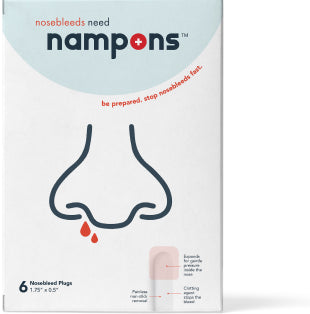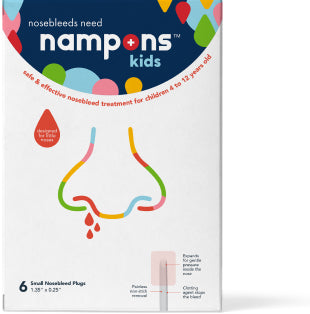Blood can flow from either or both nostrils during a nosebleed. It can be light or heavy; brief or lengthy. But where does the blood come from, how much is there, and when you should worry?
Where Does Nosebleed Blood Come From?
Your nose is full of fine blood vessels that can erupt under the slightest pressure, including trauma from falls, blows, and nose picking, as well as temperature and humidity changes. The bleeding can stem from either the front or back of the nose, known as the “Anterior” and “Posterior” areas.
Anterior nosebleeds are the most common and the most harmless. They occur following damage to the front of the nose, where there is a major artery known as the anterior ethmoidal artery and a bundle of blood vessels known as the Kiesselbach’s plexus.
The Kiesselbach’s plexus is the cause of most nosebleeds. This network of vessels supplies blood to the septum—the wall of cartilage that separates the nostrils. When ruptured, it typically causes bleeding through one nostril.
Nosebleeds that stem from the posterior part of the nose tend to be more serious and may lead to heavier bleeding. This part of the nose includes the posterior ethmoidal artery and the sphenopalatine artery, the latter of which is responsible for most posterior nosebleeds.
The sphenopalatine artery supplies blood to many deep facial structures and if ruptured, it can cause bleeding that comes out of both nostrils and may also drip down the throat.
Whether you have an anterior or posterior nosebleed, It’s important to always lean forward as this ensures that the blood drips outward and not inward, thus preventing choking and other breathing problems.
How Much Blood is There?
A nosebleed always seems worse than it actually is. You’re bleeding from your face and there isn’t always an obvious cause—it’s bound to be scary.
It’s easy to let panic overwhelm you in this situation and this is compounded when the blood begins to soak into your clothing and tissue paper, spreading a large red blotch with each drop.
In reality, a few drops have landed on your clothing; in your head, you’re Carrie at the prom.
It’s not just clothing and tissues, either. If you’re bleeding into a toilet, the water will dilute the blood, turning a few drops of crimson into a pool of pinkish blood.
The majority of nosebleeds lose just a teaspoon or two of blood. Any more than this, and you may have an issue that requires medical intervention. The problem is, because the quantity of blood always seems higher than it actually is, this is hard to judge.
It is possible to die from a nosebleed. It’s rare (very rare) but if the bleeding is excessive and not treated, it can happen. It’s important, therefore, to seek medical help if the bleeding really is excessive and/or continues unabated for over 15 minutes.



